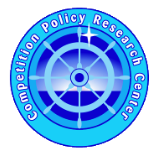Home
>Japan Fair Trade Commission
>CPRC Home
>Report/Paper
>
Does the Public Sector Make a Significant Contribution to Biomedical Research in Japan? A Detailed Analysis of Government and University Patenting, 1991-2002 (2007.1)
Does the Public Sector Make a Significant Contribution to Biomedical Research in Japan? A Detailed Analysis of Government and University Patenting, 1991-2002 (2007.1)
| File (PDF) | Contents,Author |
|---|---|
| CPDP- 25-E (PDF:285KB) |
"Does the Public Sector Make a Significant Contribution to Biomedical Research in Japan? A Detailed Analysis of Government and University Patenting, 1991-2002" (2007.1) Kenta Nakamura(Hitotsubashi University, Japan Society for the Promotion of Science) Yosuke Okada(Hitotsubashi University) Akira Tohei(Fair Trade Commission of Japan) This paper examines the value of Japanese biomedical patents filed for 1991.2002, both before and after the introduction of the TLO Act in 1998 and the Japanese Bayh-Dole Act in 1999. We use forward citations to measure the value of the patents. Adjusting the heterogeneity of propensity to cite by subsequent patents in 19 major biomedical fields per year, we employ panel regressions controlling a fixed effect of the first assignee. Our main findings are as follows: (1) patents filed by a corporation and joint applications by corporations are highly valued; (2) if a corporation is the first assignee, a patent with a government co-assignee is highly valued; (3) although the value of government patents is not very impressive, it has risen since the pro-patent policies; and (4) there is no significant change in the value of university patents before and after the Japanese Bayh-Dole Act. JEL classification codes: L65, O34, O38 Keywords: biomedical research, patent value, pro-patent policy, government research institute, university |
